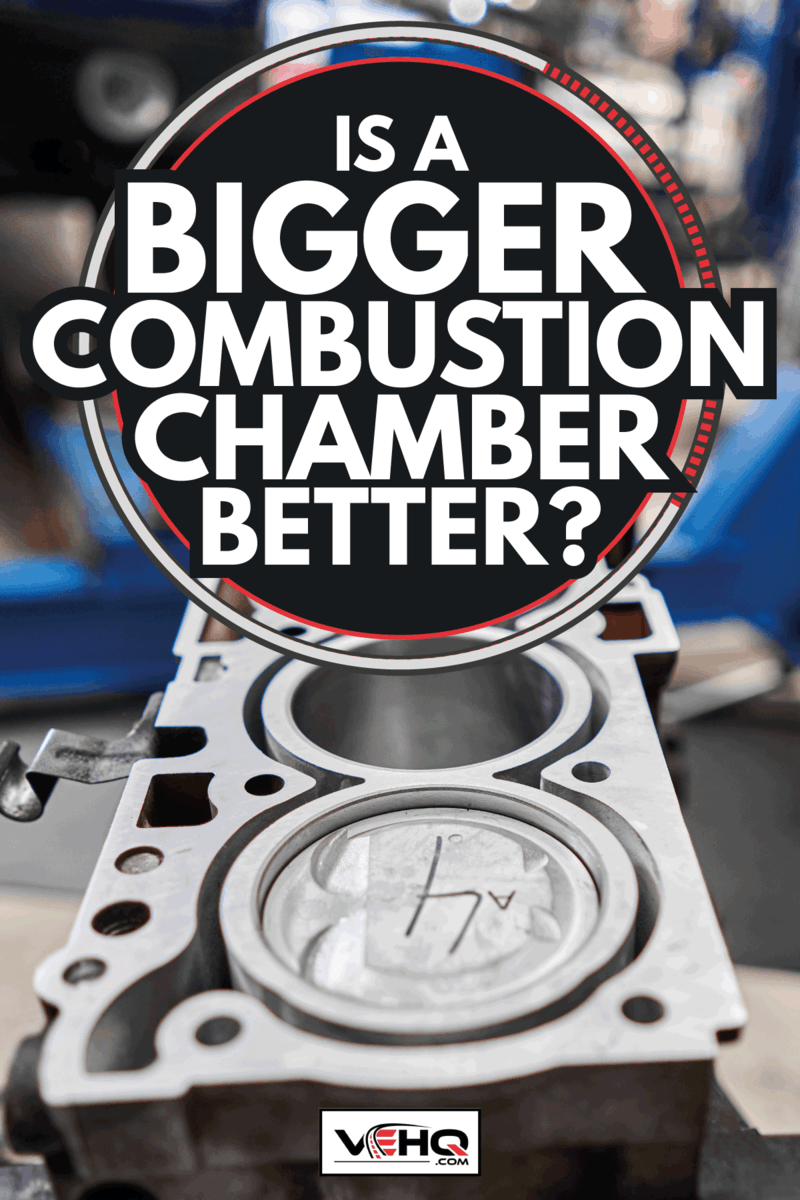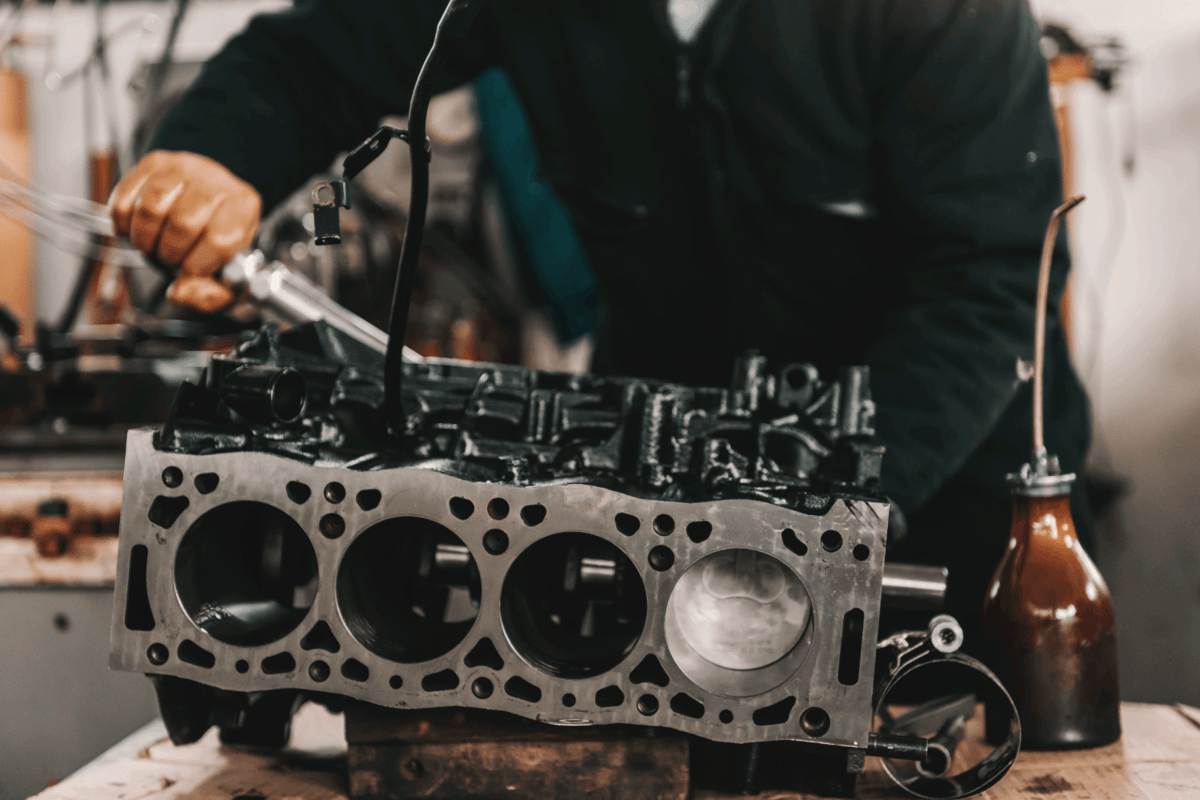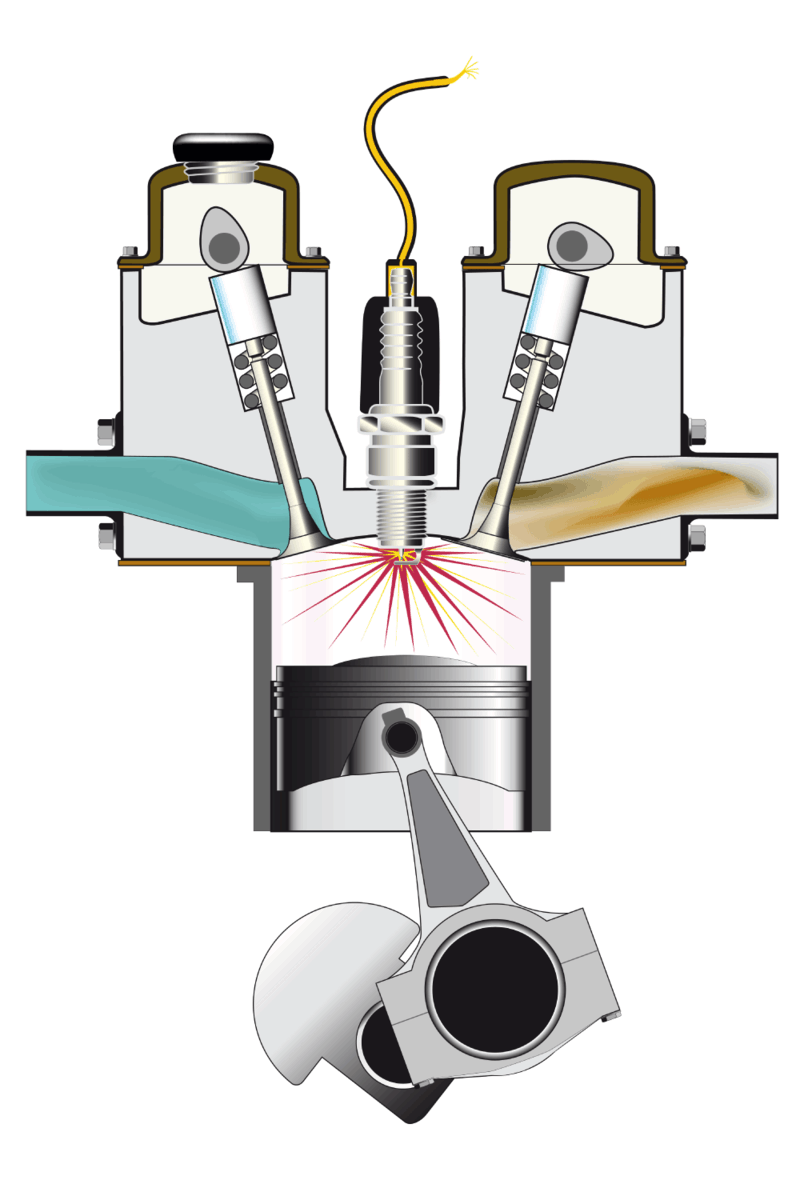Maximizing engine power is a Holy Grail for many DIY mechanics. If you're ready to invest some time and energy into improving your vehicle's get-up-and-go, it's logical to start with the combustion chambers, where all that power is generated. It might be tempting to think that enlarging the volume of the combustion chambers will increase your engine's power. But is a bigger combustion chamber always better? We've done the research, and we have the answers for you!
A bigger combustion chamber is not necessarily better. Enlarging a combustion chamber reduces its compression ratio, resulting in cooler burning temperatures and inefficient combustion.
In the remainder of this article, we'll describe how a combustion chamber works and how its shape and size affect its performance. We'll also provide step-by-step instructions for measuring the volume of a combustion chamber and for increasing its size. We will describe the different types of combustion chambers and tell you which is most common in current vehicle engines. And we'll discuss whether open or closed chamber heads are better. Keep reading to learn more!

Is A Bigger Combustion Chamber Better?
To understand how the size of a combustion chamber affects its performance, it's important to know a little about its design and how it works.
Combustion Chamber Basics
The engines of passenger vehicles have four, six, or eight cylinders. In the picture below, the cylinders are the four large holes in the engine block. In a fully assembled engine, a metal cylinder head caps each cylinder.

Intake valves, exhaust valves, and a spark plug are mounted in the cylinder head. A piston slides up and down within the cylinder. The combustion chamber is the space between the cylinder head and the crown of the piston.

Modern automotive engines use the four-stroke combustion cycle illustrated above:
- Intake: The piston is near the bottom of the cylinder. The intake valve sprays fuel into the combustion chamber, where it mixes with air.
- Compression: The piston moves upward in the cylinder, compressing the fuel/air mix.
- Combustion: The spark plug ignites the fuel/air mix with the piston at its highest point. The resulting combustion releases mechanical energy, forcing the piston back down.
- Exhaust: Combustion also produces heat and NOx (nitrogen oxide) gas. The cylinder walls absorb some of the heat. The exhaust valve opens and expels NOx and additional heat energy.
What Makes Fuel Burn In A Combustion Chamber?
Gasoline and diesel do not burn in their liquid form. Instead, they must be atomized and mixed with air for combustion to take place. Automobile engines incorporate two additional factors — compression and turbulence — to increase the rate of combustion and, thus, the engine's power.
Compression
As the piston rises during the compression stroke, the combustion chamber shrinks. This compresses the fuel/air mixture in the chamber, raising its temperature. The ratio of the chamber's volume at its largest and smallest, when the piston is at the bottom and at the top, is the chamber's compression ratio. The larger the compression ratio, the higher the temperature of the gases in the chamber, and the greater the power generated during combustion.
The combustion chambers, cylinder heads, and pistons in every engine model are designed to achieve a specific compression ratio; approximately 9:1 in a gasoline engine and 20:1 in a diesel. The compression ratio, not the size of the combustion chamber, determines the power and efficiency of the engine's combustion process.
Turbulence
Introducing turbulence into the combustion chamber breaks up the flame front so that burning and unburned gases mix. This increases the rate of combustion. However, too much turbulence will cause heat to bleed out of the chamber, while too little will fail to promote combustion.
Several factors combine to introduce turbulence: the position of the intake valve, the size and shape of the chamber, and the compression ratio. Some combustion chambers feature a squish region — an odd shape that creates a pocket of lower temperature designed to cool the intake valve and increase turbulence. Overall, the shape of the combustion chamber is more important than its size in achieving optimal turbulence.
How Do You Size A Combustion Chamber?
All of the combustion chambers in an engine must have the same volume, to within 0.25 CCs (cubic centimeters) of each other. This way, the compression ratio and the timing of ignition remain uniform across the chambers. Take these steps to measure combustion chambers, called CCing the chambers.
- Clean the combustion chamber with a mild detergent; wipe it dry.
- Waterproof the chamber by applying a thin bead of grease around the valve seats and top rim.
- Replace the spark plug with an old, expendable one that you can discard afterward.
- Drill air holes into a clear, hard piece of plastic; place it over the chamber's opening.
- Using a syringe marked in cubic centimeters, squirt water through one of the air holes into the chamber. Continue until the chamber is full but not overflowing.
- Record the total number of cubic centimeters of water you put into the chamber. This is the chamber's volume.
- Remove the plastic cover; drain and wipe the chamber dry.
- Repeat this process for each combustion chamber. Volumes should be within 0.25 CC of each other.
Click here for waterproof valve grease on Amazon.
How To Increase Combustion Chamber Size?
The main reason to increase the size of an engine's combustion chamber is to bring its volume to within 0.25 CCs of the other chambers. You can increase the efficiency of airflow, as well, by using the following process, commonly known as unshrouding the valves:
- Inspect the intake and exhaust valves, especially the rims of the valve seats and the spots where they meet the cylinder walls. Look for rough edges, discontinuities, and overlaps where excess material impedes airflow.
- Mark these areas with a paint pen.
- Using a 1/4" die grinder, grind off the excess material.
- Wipe away dust and grit.
- CC the combustion chamber to determine how close its volume is to the size you desire.
- If the chamber is still too small, sand the areas where you've removed material, using a Dremel with an 80-grit flywheel.
- CC the chamber again.
- Repeat steps 6 and 7 until the chamber reaches the desired volume.
Click here for this Dremel tool kit on Amazon.
What Is The Most Common Combustion Chamber Design?
Gasoline Engines
Contemporary gasoline engines include four major designs: pentroof, hemispherical, wedge, and bathtub/heart. Each name refers to the shape of the combustion chamber at the moment of ignition.
Pentroof
The pentroof, the newest type of combustion chamber, is the one most often used in contemporary vehicle engines. It resembles half a hexagon, with a flat top and two slanted roofs. Two intake valves reside in one of the roofs, and two exhaust valves in the other. The separation of the intake and exhaust valves minimizes heat transfer between them to avoid premature heating of inflowing gases.
The spark plug is at the center of the cylinder head, precisely in the middle of the four valves. This allows for quicker combustion and lower combustion temperatures. The pentroof combustion chamber has a low surface-to-volume ratio, reducing emissions and improving gas mileage.
Hemispherical
The hemispherical combustion chamber, a precursor to the pentroof, features a domed top with an intake valve located at approximately a 58° angle from the top of the dome and an exhaust valve at the same angle on the opposite side. The spark plug emerges from the top of the dome.
The oversized intake and exhaust valves in a hemispherical combustion chamber create more engine power at high RPMs. The placement of the valves opposite each other creates a highly efficient airflow with minimal heat loss.
Click here for this hemispherical cylinder head for Dodge Ram on Amazon.
Wedge
The wedge combustion chamber has been in use for decades. Although it is not as efficient or powerful as the hemispherical or pentroof designs, it is still used by many vehicle manufacturers.
The cylinder head is shaped like an inclined basin. The intake and exhaust valves sit side-by-side, with the spark plug opposite them. Valves and spark plugs are angled so that when the piston is at its top position, the space between the piston and the cylinder head resembles a wedge.
This design forces the air/fuel mix downward, causing a buildup of kinetic energy and adding to the power released when the air/fuel mixture ignites.
Bathtub/Heart
More efficient heart-shaped chambers have replaced the bathtub-shaped combustion chambers of the 1950s, but the basic principles are still the same. The cylinder head looks like an inverted bathtub; the intake and exhaust valves sit side-by-side at the top-center, with the spark plug off to the side.
The slope of the chamber walls is gentler than that of the wedge-shaped combustion chamber, so less explosive energy is released upon ignition, but the design makes the bathtub/heart-shaped chamber more efficient. However, the side-by-side position of the intake and exhaust valves results in substantial heat loss.
Diesel Engines
All diesel engines use the same type of combustion chamber: a direct injection chamber with intake and exhaust valves and no spark plug. The chamber is typically cylindrical in shape, with the valves located on opposite sides of the cylinder head.
Click here for Ford Powerstroke 6.0 diesel cylinder heads on Amazon.
Which Is Better, Open Or Closed Chamber Heads?
In a closed chamber cylinder head, the spark plug protrudes down into the combustion chamber. By contrast, the spark plug in an open cylinder head is recessed so that its tip is level with the cylinder head. The major differences are:
- The open cylinder has about 20 CCs higher volume than the closed cylinder.
- The open cylinder promotes better airflow.
- The closed cylinder has a higher compression ratio and thus produces more power.
In general, a closed chamber cylinder head works best in high-performance vehicles and muscle cars. The open chamber design is more efficient; it is used in most mainstream vehicles.
In Closing
The combustion process in your vehicle is complex and dependent on several parts of the system working together. The shape of the chamber, the compression ratio, and the turbulence of the gases within it are more important than its size in increasing the engine's power and efficiency. Knowing how the system works can help you decide whether to make any alterations in your engine's combustion chambers.
You may also enjoy:




